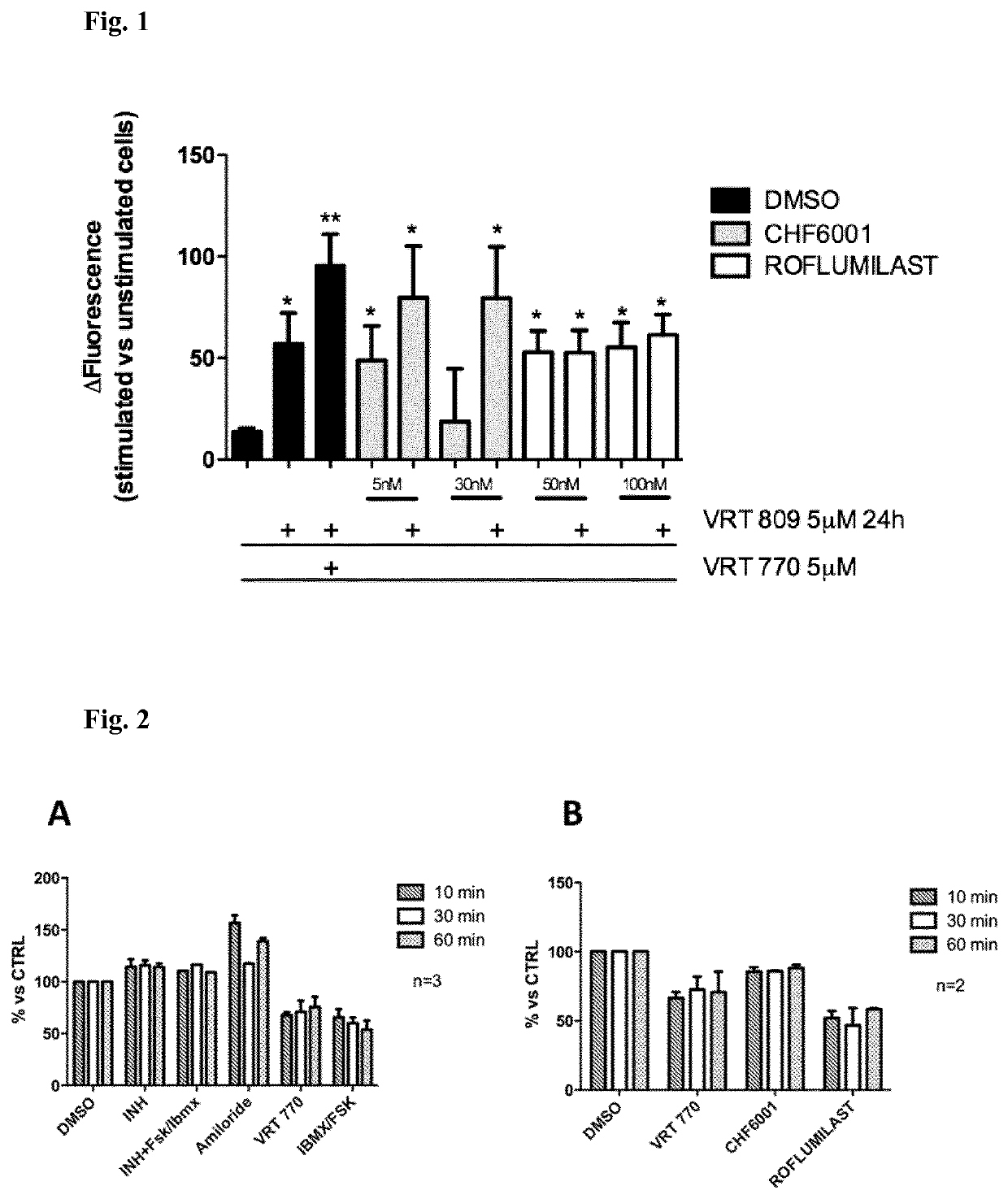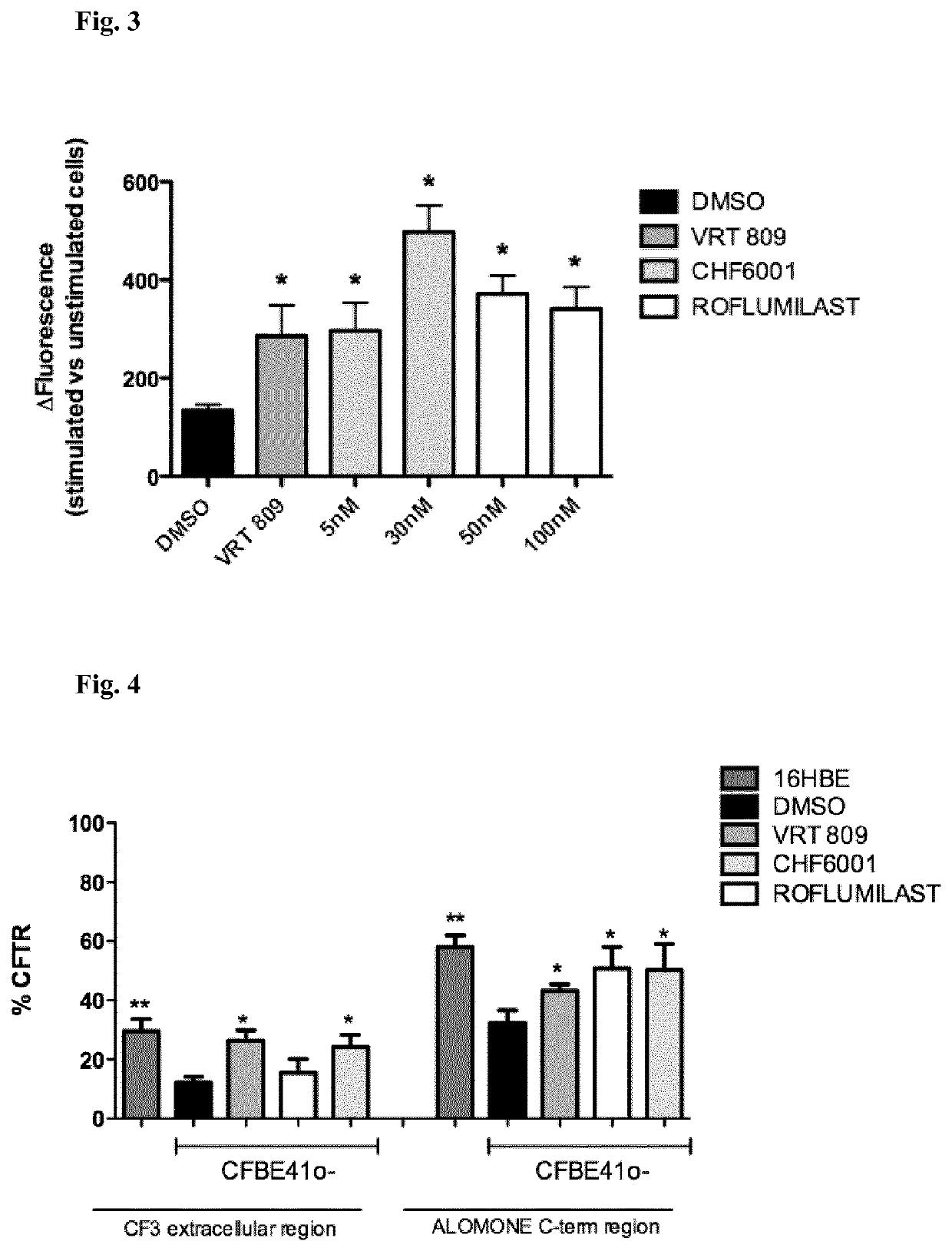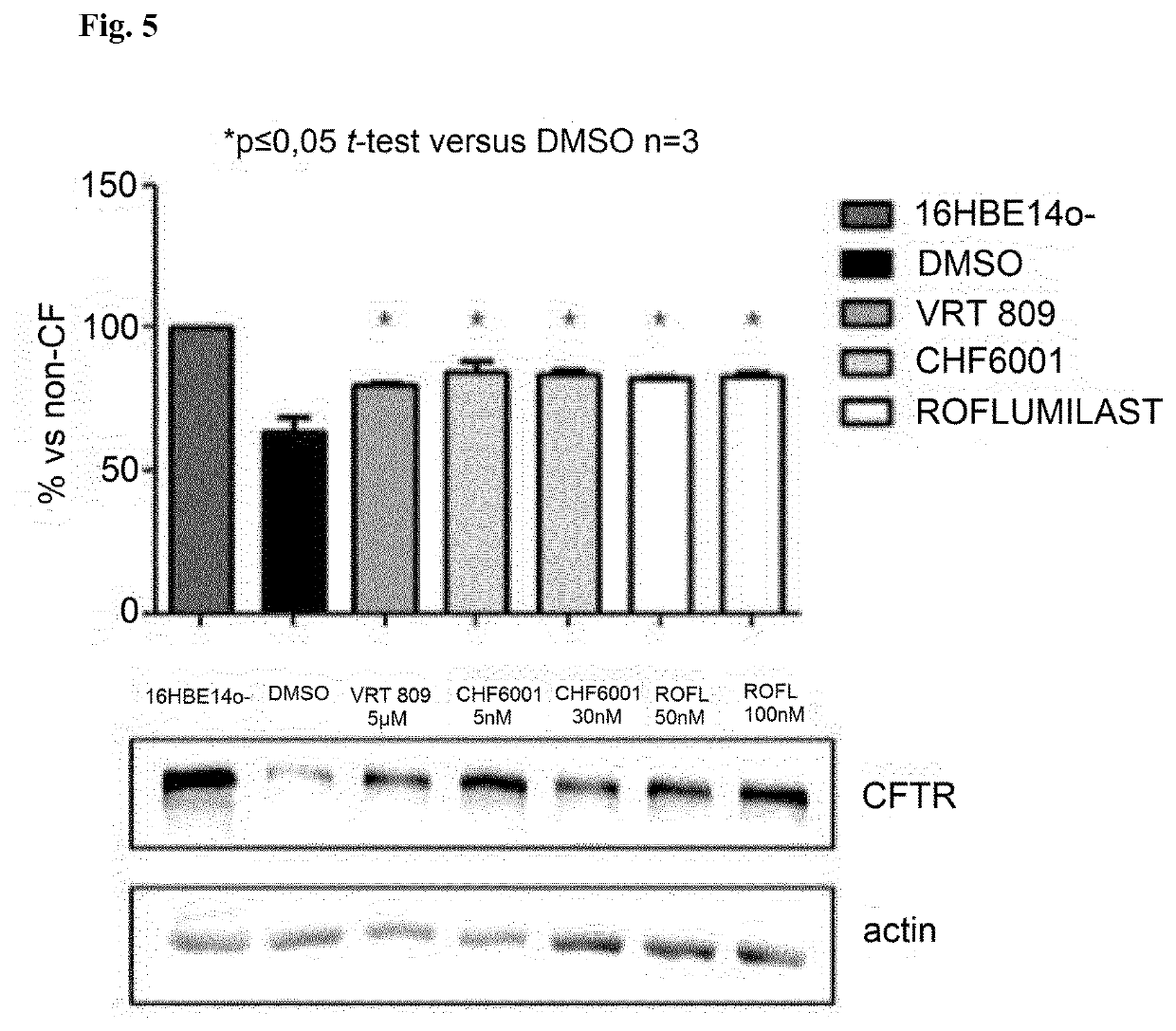Use of 1-phenyl-2-pyridinyl alkyl alcohol derivatives for treating cystic fibrosis
a technology of pyridinyl alkyl alcohol and cystic fibrosis, which is applied in the direction of respiratory disorder, organic active ingredients, organic chemistry, etc., can solve the problems of affecting the stability and gating of cftr protein, the inability to fully satisfy the medical treatment of cystic fibrosis available to date, and the inability to fully satisfy the cystic fibrosis treatmen
- Summary
- Abstract
- Description
- Claims
- Application Information
AI Technical Summary
Benefits of technology
Problems solved by technology
Method used
Image
Examples
example 1
ntiator Activity of CHF6001
[0268]The potential effect of different agents on the activity of CFTR in CFBE41o- cells was analysed by the HS-YFP assay, combining a short exposure (10 minutes) with agents as follows: CHF6001, Roflumilast or VRT 770 (5 μM), alone or in combination, with a 24 h pre-treatment with the CFTR corrector VRT809 (5 μM). For concentrations of the agents used see FIG. 1.
[0269]The results are shown in FIG. 1. These results demonstrate a significant ability of both agents to stimulate CFTR activity.
[0270]Of note is the observation that, following CFTR correction by the CFTR corrector VRT809, CHF6001 restored the CFTR activity in CFBE41o- cells to levels comparable to the reference compound VRT 770.
[0271]By the TEER assay, shown in FIG. 2, the functionality of the apical channels present in the cells is determined by measuring the ion flux through the epithelium at different time points. The resistance decreases in function of the increase in the number of ions that...
example 2
ector Activity of CHF6001
[0275]The potential corrector activity of roflumilast and a compound of general formula (I) (CHF6001) was evaluated in comparison with the known CFTR corrector VRT809 in the human bronchial epithelial cell line CFBE41o- (homozygous for the ΔF508 mutation of the CFTR protein) by the HS-YFP assay (FIG. 3). For concentrations of the agents used see FIG. 3. Surprisingly, both roflumilast and CHF6001 induced CFTR activity to a level equal or superior to VRT809.
[0276]It was tested whether recovery of CFTR activity in the human bronchial epithelial cell line CFBE41o- (homozygous for the ΔF508 mutation of the CFTR protein) by roflumilast and CHF6001, respectively, could be associated with a recovery of the presence of CFTR at the cell surface. The known CFTR corrector VRT809 was used for comparison purposes. For concentrations of the agents used see FIG. 4. The presence of CFTR was evaluated by flow cytometry using two different antibodies that target extracellular ...
PUM
| Property | Measurement | Unit |
|---|---|---|
| internal diameter | aaaaa | aaaaa |
| concentration | aaaaa | aaaaa |
| frequency | aaaaa | aaaaa |
Abstract
Description
Claims
Application Information
 Login to View More
Login to View More - R&D
- Intellectual Property
- Life Sciences
- Materials
- Tech Scout
- Unparalleled Data Quality
- Higher Quality Content
- 60% Fewer Hallucinations
Browse by: Latest US Patents, China's latest patents, Technical Efficacy Thesaurus, Application Domain, Technology Topic, Popular Technical Reports.
© 2025 PatSnap. All rights reserved.Legal|Privacy policy|Modern Slavery Act Transparency Statement|Sitemap|About US| Contact US: help@patsnap.com



